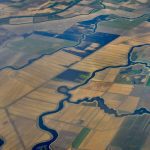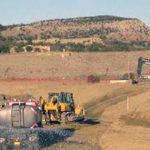- Western leaders recognize the value of Traditional Ecological Knowledge.
- Indigenous cultural burning practices are being reintroduced to reduce wildfire risk.
- Tribes in California, Montana, Nevada, and Idaho are restoring ancestral land management methods.
- Restoration projects also support water supply, including for the Great Salt Lake.
- Western Governors advocate integrating Indigenous ecological knowledge into public policy.
Friday, November 7, 2025 — For thousands of years, Indigenous peoples have cared for the Western landscape through practices grounded in observation, respect, and balance. Their relationship with the land, refined over generations and recognized by the Western Governors Association , has come to be known as Traditional Ecological Knowledge (TEK). TEK encompasses a living system of understanding how plants, animals, water, fire, and people interact to sustain healthy ecosystems.
, has come to be known as Traditional Ecological Knowledge (TEK). TEK encompasses a living system of understanding how plants, animals, water, fire, and people interact to sustain healthy ecosystems.
In recent years, policymakers and scientists have begun acknowledging the value of this wisdom in managing the modern West’s environmental challenges, particularly wildfire risk and ecosystem restoration.
The Role of “Good Fire.”
Long before European settlement, Native Americans, Alaska Natives, and Native Hawaiians used controlled fire for cultivation, hunting, and ecological maintenance. Fire was viewed as a kind of medicine, capable of renewing the forest and restoring balance when applied thoughtfully.
That approach changed in the 19th century, when cultural burning was largely outlawed across the region. Decades of fire suppression followed, contributing to dense forests and vegetation buildup. A University of Utah study notes that “in the absence of natural fire cycles and Indigenous burning, modern forests have more fodder to fuel high-severity fires.”
notes that “in the absence of natural fire cycles and Indigenous burning, modern forests have more fodder to fuel high-severity fires.”
This shift in understanding has spurred a new respect for what some call “good fire.” Western leaders now recognize that not every fire must be extinguished, and that cultural burning can help prevent catastrophic wildfires.
Western Governors’ Support.
The Western Governors’ Association (WGA) —a bipartisan coalition representing 22 Western states and territories—has officially endorsed this perspective. In its policy resolution titled National Forest and Rangeland Management
—a bipartisan coalition representing 22 Western states and territories—has officially endorsed this perspective. In its policy resolution titled National Forest and Rangeland Management , the group acknowledged that traditional Native American ecological practices can “contribute significantly to improved forest management in the West” and encouraged federal and state agencies to incorporate these insights into planning and management.
, the group acknowledged that traditional Native American ecological practices can “contribute significantly to improved forest management in the West” and encouraged federal and state agencies to incorporate these insights into planning and management.
Modern Examples of Cultural Burning.
California has taken a leading role in reintroducing Indigenous fire management. In 2024, Governor Gavin Newsom signed legislation reaffirming tribal sovereignty and allowing tribes to carry out cultural burns under their own authority. The Karuk and Yurok tribes in Northern California have since used these controlled burns to improve local habitats and reduce wildfire danger.
Further south near Los Angeles, land managed by the Tongva people survived recent wildfires with far less damage than nearby properties. Tribal leaders attribute the success to replacing flammable eucalyptus with native oak trees and nurturing the land through traditional care.
In Montana, the Salish and Kootenai people have reintroduced cultural burns on the Flathead Reservation to restore native blue camas habitat, while the Washoe Tribe in Nevada has also resumed controlled burns to renew their ancestral lands.
Expanding the Role of Indigenous Knowledge.
Fire management is only one example of TEK at work. Across the region, Indigenous communities are applying traditional methods to water and habitat restoration projects.
In Idaho, at the site of the Bear River Massacre, the Northwestern Band of the Shoshone Nation is restoring the landscape to its natural state. The project is expected to return an estimated 13,000 acre-feet of water annually to the Great Salt Lake, one of the most endangered ecosystems in North America.
Meanwhile in Hawaii, the revival of ancient loko i‘a aquaculture systems demonstrates how Native Hawaiian engineering once supported food production while maintaining balance with surrounding ecosystems—something modern aquaculture often struggles to achieve.
Indigenous Knowledge for the Future.
As climate change and population pressures reshape the American West, Indigenous ecological knowledge is increasingly seen as essential to long-term resilience. By integrating TEK into modern science and policy, the region may rediscover a balance that was once second nature to its earliest inhabitants.
The Western Governors’ Association continues to support partnerships between states and tribes, affirming that collaboration—not exclusion—is the path forward for healthier forests, waterways, and communities.
Information for this article was provided by the Western Governors’ Association.
Frequently Asked Questions.
What is Traditional Ecological Knowledge (TEK)?
Traditional Ecological Knowledge refers to the cumulative understanding, beliefs, and practices developed by Indigenous peoples through generations of interaction with the environment. It guides how humans can live sustainably within natural systems.
Why was cultural burning restricted?
During the 19th and 20th centuries, federal and state policies prohibited intentional fires, favoring full suppression. These restrictions disrupted natural fire cycles, leading to fuel buildup and larger wildfires.
Which states are reintroducing cultural burns?
Tribal-led or state-supported cultural burning programs are active in California, Montana, Nevada, and other Western states.
How does Indigenous land management help with water issues?
Restoration projects like the Shoshone Nation’s work at the Bear River Massacre site enhance soil health, promote native vegetation, and increase water retention—helping return water to systems such as the Great Salt Lake.
What is the role of Western Governors?
Through the Western Governors’ Association, state leaders advocate for integrating Indigenous knowledge into forest, rangeland, and water management plans to improve resilience and ecological health across the region.




